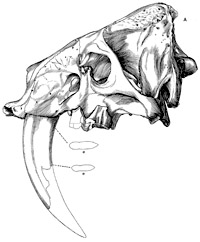Museum, University of Nebraska State
Date of this Version
1941
Document Type
Article
Citation
VOLUME 2 LINCOLN, NEBRASKA, DECEMBER 1941 NUMBER 8
Abstract
The pipy concretions of the Arikaree (lower Miocene) of Nebraska and adjacent states were first described by Nelson Horatio Darton (1899, p. 743) as "characteristic layers of hard, fine-grained, dark-gray concretions, often consisting of aggregations of long, irregular, cylindrical masses" (see Figures 30, 32, 34, and 35). The individual pipes vary in diameter from a few inches to several feet, and in length from a few inches to a hundred yards or more. Tests demonstrate that pipy concretions are composed of sand cemented by calcium carbonate. When dipped in acid the cement is dissolved and the concretion is reduced to incoherent fine sand. No explanations for the origin of pipy concretions have been made but it seems rather generally agreed by field observers that they were formed by "underground water."
Included in
Entomology Commons, Geology Commons, Geomorphology Commons, Other Ecology and Evolutionary Biology Commons, Paleobiology Commons, Paleontology Commons, Sedimentology Commons

